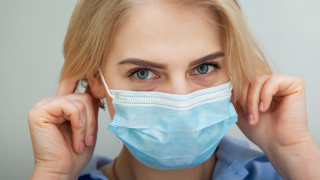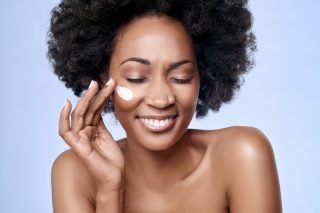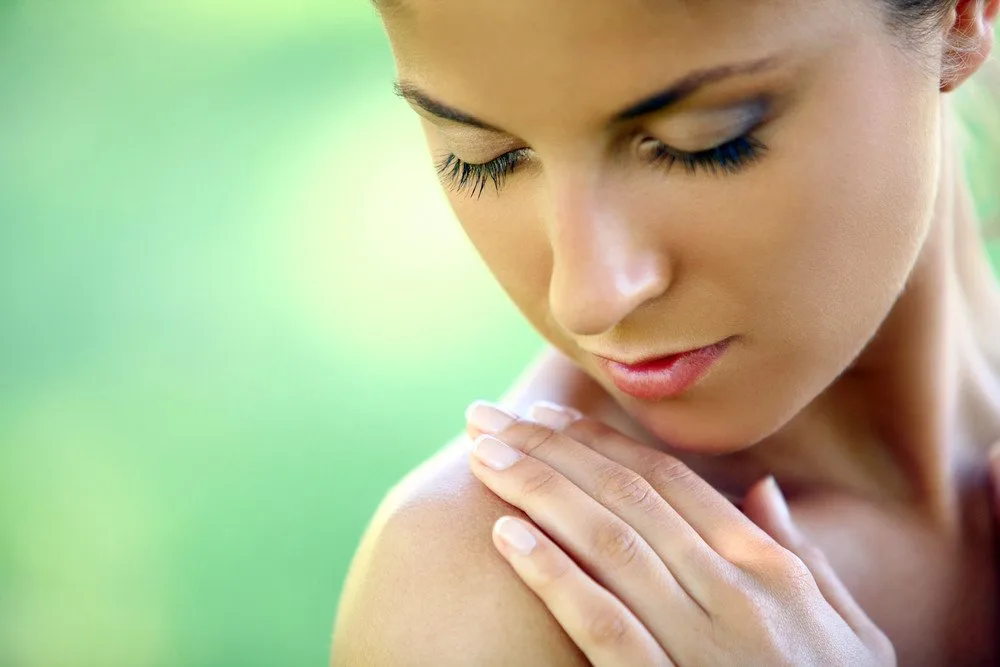Your skin is the largest organ in your body. The world sees your skin first, which is why so many billions of dollars are spent globally on skincare and aesthetic procedures. Yet, just like your gut microbiome, the health of your skin microbiome has a direct impact on how you feel and look. So it makes sense to nurture and support your skin microbiome naturally.
What is the skin microbiome?
Your skin is home to a community of billions of friendly living microorganisms, also known as skin flora. This community is called the skin microbiome. You can think of it as an invisible eco-system that lives on the skin working to help keep it healthy and in good condition.
Yes, there are thousands of living organisms on our skin
You will have around 1,000 different species of bacteria, fungi, viruses, and mites living on your skin.
These microbes are your skin microbiome
These microbes, also known as skin flora, are harmless or even beneficial. They play a vital role in your immune system and skin appearance. These microbes have evolved over thousands of years and consist of many distinct types of colonies, depending on the location and condition of the microenvironment.
Your skin microbiome is unique to you!
Interestingly, your skin microbiome is just like a fingerprint. It’s unique to you. Some parts are similar in everyone, but others are defined by factors that are personal to you. These include genetics and lifestyle. Like where you live, what you eat, and even if you have pets. And your skin microbiome is different all over your body, too. Right from your face to your underarms to your legs.
What do they live on?
According to AskScientists this microbiota survives off of the salt, water, and oil (sebum) your skin releases to keep itself cool and lubricated. Several factors determine the habitat of the various microbiota, like:
-
Body temperature
-
Skin thickness
-
Amount and size of folds
-
Skin pH
-
Density of hair follicles and glands
They also live on other parts of your body
“The microbiota on your face looks different from the microbiota on your armpits. Areas with a higher density of oil glands, like your face, back, and chest, thrive off of the lipids (fats) in your sebum. Warm, humid areas, such as the groin and between the toes, host microorganisms that love a danker environment. Meanwhile, dry, cool patches—like your arms and legs—have far fewer micro-colonies than the rest of your body. In all, the average person carries around two pounds of microbes on their body at all times.”
There’s a lot of skin flora
The sheer amount and diversity of skin flora may sound pretty overwhelming. But it’s actually good and healthy. Having a bountiful, well-balanced microbiome plays an important role in your overall health, as well as in the appearance of your skin. The microorganisms help produce vitamins, hormones, and chemicals that affect everything from your mood to metabolism to the immune system.
Why you need healthy skin flora
The skin is the body’s first line of defense against injury or potential pathogens. But it’s not actually your skin’s cells that act as the main defense. It’s the skin’s microbiome.
Your skin’s inherent environment is rather unfriendly to bad bacteria. It’s cool and dry. The pH is acidic. Even sebum, your skin’s lubricant, is antimicrobial. Ideally, your skin has a bountiful amount of microbiota to combat all the bad bacteria you come into contact with.
So what constitutes a healthy skin microbiome?
A healthy skin microbiome, which prefers the acidic environment your skin provides, helps your immune system out.
How does your skin microbiome get damaged?
It’s important to know that your skin could be left vulnerable if your skin microbiome has been damaged in one of many ways:
-
Soaps
-
Incorrect or overuse of antibiotics
-
Harsh skincare products
-
Environmental factors
Unfortunately, modern hygiene practices, including daily showers or baths and the use of aggressive soaps and detergent, along with less healthy diets have impacted our skin microbiome. Also, a lack of interactions with plants, soil, and the microbiomes of livestock and other wildlife, may have a bad impact.
Just as we know about gut health and the importance of eating foods that assist with good gut health, you should be choosing your skin products carefully.
The products you use should support your skin microbiome and not damage it.
What happens when your skin microbiome is out of balance?
A balanced, diverse microbiome supports many of the processes the skin needs to stay healthy and resilient. When the microbial balance is disturbed, you may not see a difference right away. However, over time your skin will age more and look tired and breakouts will become more common.
Studies have also shown a link between a significantly imbalanced microbiome and a variety of conditions, for example, atopic dermatitis and eczema.
The skin microbiome is under science’s spotlight
The skin microbiome has caught the attention of many large beauty and skincare brands. It has even inspired the creation of some startup cosmetic brands who are experimenting with adding microbes to their products.
Is this good for your skin? What should you bear in mind when it comes to your skin?
 Tips for a flourishing, healthy skin microbiome
Tips for a flourishing, healthy skin microbiome
You can protect the delicate communities of skin flora. To keep your skin’s microbiome happy, healthy, and thriving, consider these tips:
1. Cleanse and dry
When it comes to your skin there’s a fine balance between having good hygiene and overdoing it. It’s super important to avoid over-washing or to use cleansers that may be harsh on your skin. Read the ingredients and instead consider using products that don’t contain a list of chemicals and astringents.
2. Avoid scrubbing with micro-beads and scrubbing in general
Use natural soap or a very mild cleanser. Avoid harsh and extreme cleansers. And don’t scrub too much. The friction can strip your skin of its healthy microbes, and create micro-tears in the skin at the same time. These tiny tears can be a breeding ground for unhealthy pathogens. By the way, micro-bead (plastic) products have also been found to be hugely disruptive to the environment, so another good reason not to get sucked into using these products. When it comes time to dry off, gently pat your skin dry gently, instead of vigorously rubbing yourself with the towel.
3. Eat for your microbiome
Your diet plays a vital role in keeping your skin healthy. Eating a diet rich in healthy fats, vegetables, protein, and fiber helps your gut bacteria, which may in turn help your skin microbiome. To start, encourage microbial diversity by promoting healthy gut bacteria and eating healthy foods. Focus on foods that contain prebiotics (like oats, onions, leeks, garlic, soy milk, and legumes) as well as foods with probiotics (like yogurt or kefir) to stimulate beneficial skin bacteria and address acne. You may also want to consider trying probiotic supplements if you just cannot include this stuff in your diet. Research published in Critical Reviews in Food Science and Nutrition shows that probiotics may help prevent and even treat skin diseases.
Healthy skin starts on the inside! Following a nutritious diet can give your skin the tools and resources it needs to protect your body from harmful pathogens, keeping you healthy and feeling great.
4. Avoid synthetic fabrics
Choose natural fibers like cotton over synthetics whenever possible. Man-made fabrics, especially those that are tight or worn close to the skin, can cause an imbalance in your microbiome. Remember that microbiota thrives in different areas of the body because of their unique environments. If you often wear items that cause your temperature, sebum or sweat production, or otherwise affect normal skin conditions, you could create an environment in which good skin flora cannot thrive.

5. Choose your skincare products wisely
Currently, it is incredibly difficult with the COVID-19 virus and regulations to avoid harsh hand sanitizing. However, be mindful of how many times a day or week you are sanitizing your skin. There is little to be done about it for now, other than staying out of public areas that require multiple sanitizations.
Read the labels, be aware
In many cases, antimicrobials and sanitizers kill the beneficial microbes along with the bad ones. Beyond the antibacterial type, soaps, in general, are alkaline. This can upset the balance of your acidic skin and make you more vulnerable to alkaline-loving potential pathogens. If you want to go the extra mile to ensure your hygiene isn’t damaging your microbiota, try one of the microbiome soaps that are now on the market.
 When it comes time to moisturize, be aware that many lotions have ingredients that are not microbiome-friendly.
When it comes time to moisturize, be aware that many lotions have ingredients that are not microbiome-friendly.
Keep it closer to nature
Look for products that use natural ingredients and less harsh chemicals and additives. Keep it close to nature.
6. Hydrate, hydrate, hydrate
We all know how important drinking water is for our bodies. Well, the skin is one of water’s largest benefactors of good hydration. Also, be sure to drink at least 64 ounces of water per day. Being chronically dehydrated can negatively impact your microbiome.
7. Work up a good sweat
Exercise is great for your body and also excellent for your skin. Try to work up a sweat regularly to help feed your skin’s microbiome.
The bottom line
It’s important to embrace your skin microbiome. While it may go against everything you’ve been taught for decades, not all bacteria or other microbes should be killed or avoided. If you want great skin, then start choosing products that will work to support your skin microbiome instead.



![women [longevity live]](https://longevitylive.com/wp-content/uploads/2020/01/photo-of-women-walking-down-the-street-1116984-100x100.jpg)










